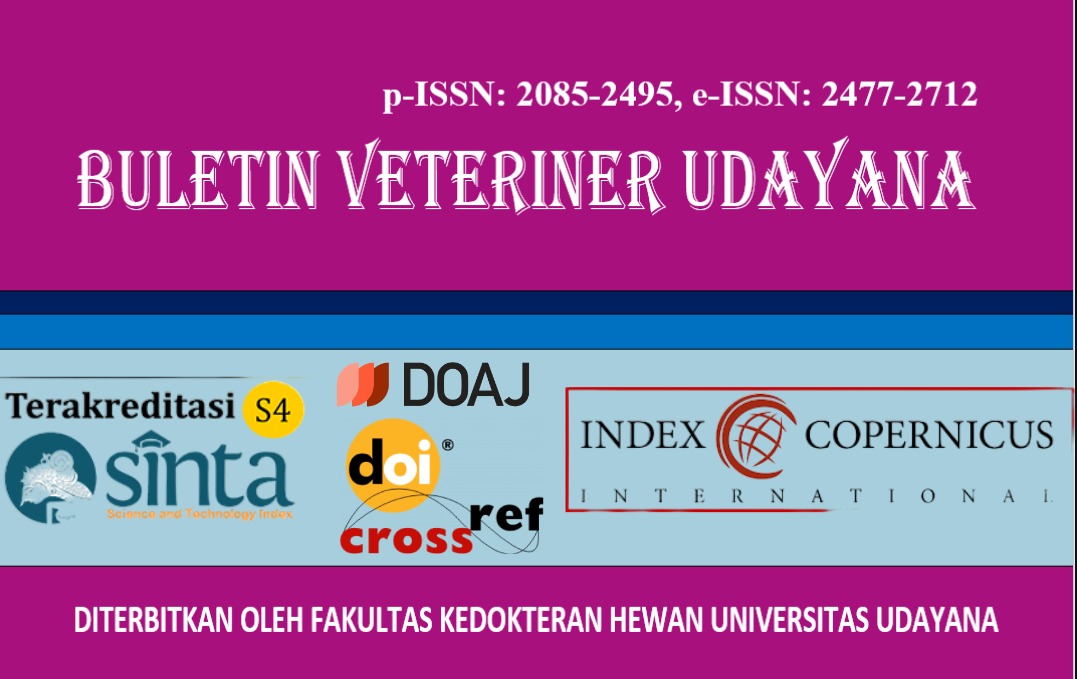RISK FACTOR ANALYSIS AND PREVALENCE OF COCCIDIA IN SOWS AT BREEDING FARMS IN GIANYAR DISTRICT, BALI PROVINCE
DOI:
https://doi.org/10.24843/bulvet.2025.v17.i03.p57Keywords:
Coccidiosis, cross-sectional, Cystoisospora suis, Eimeria spp.Abstract
Coccidia, a protozoan parasite, can impede growth, reduce body weight, and even cause mortality in pigs. This study aimed to ascertain the prevalence and risk factors associated with coccidia infection in sows on pig breeding farms in Gianyar Regency. This observational study had a cross-sectional design. The sample consisted of 204 fecal specimens from sows across seven sub-districts in Gianyar Regency. Fecal samples were preserved in 2.5% potassium dichromate before examination using the salt-saturated flotation method. Prevalence data were analyzed descriptively, and logistic regression was used to identify risk factors. The findings revealed that 39.70% (81/204) of the sows were infected with coccidia, including Eimeria spp. (12.75%, 26/204), Cystoisospora suis (4.41%, 9/204), unsporulated oocysts (22.55%, 46/204), and dual infections with Eimeria spp. + C. suis (2.94%, 6/204). Farms with fewer than 100 pigs were 7.018 times more at risk than those with more than 100 pigs (p = 0.015; OR = 7.018). The source of water was also significantly associated with the use of well water (p = 0.023; OR = 0.097) and water from a regional water company (PDAM) (p = 0.012; OR = 0.127), which lowered the risk compared with spring water. Farmers who did not regularly disinfect their enclosures faced a risk 24.979 times greater than those who disinfected their enclosures daily (p = 0.020; OR = 24.979). Dry pigpen conditions (P = 0.003, OR = 0.052) were more protective than occasionally wet conditions. In conclusion, the prevalence of coccidia infection in breeding farms in Gianyar Regency was notably high. Factors associated with the prevalence of coccidia infection include pig population in the farm, water source, frequency of pen disinfection, and pen conditions.




